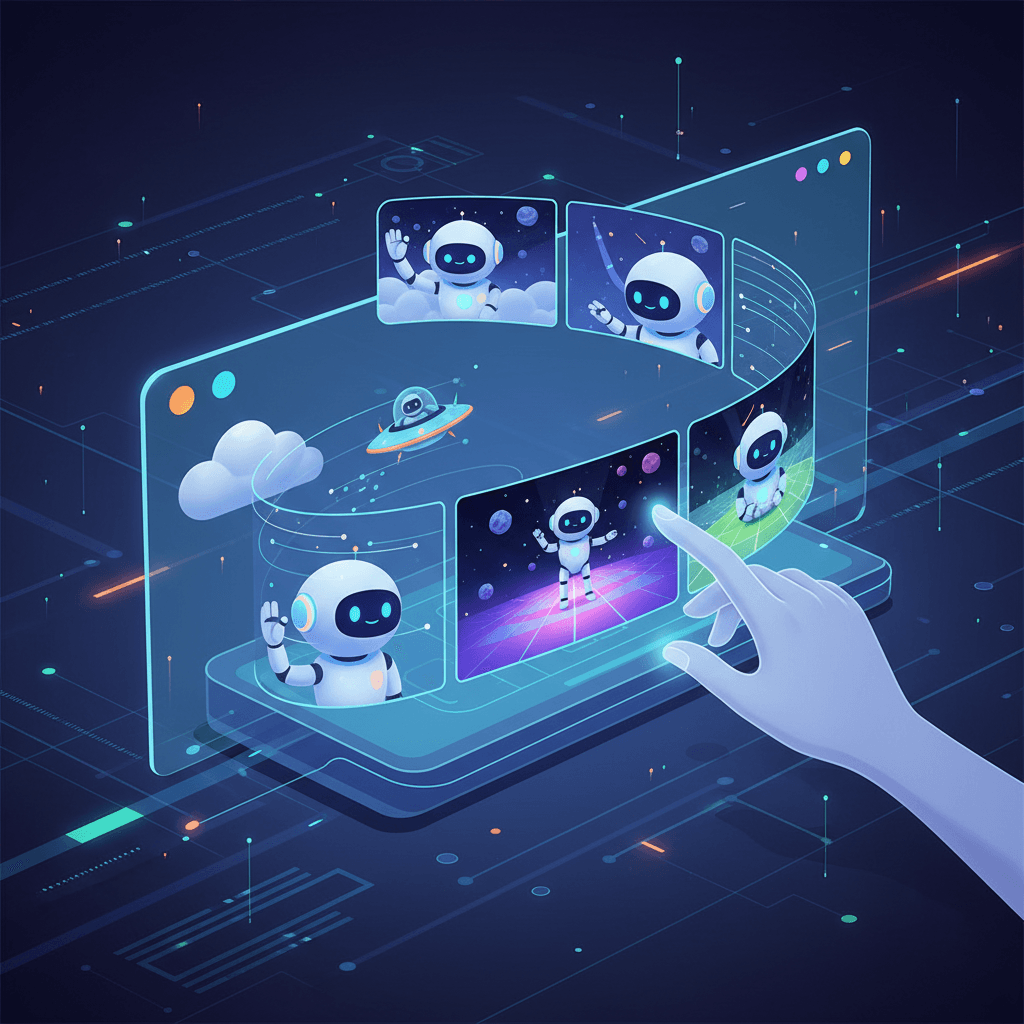Sora Takes On Video Editing: Consistent Characters, Stitching Reshape Storytelling
Sora evolves with consistent characters and in-app editing, transforming into a robust platform for complex, narrative-driven content.
October 30, 2025

OpenAI is escalating the artificial intelligence arms race, rolling out significant new features for its Sora video generator that aim to transform the tool from a novelty into a robust platform for narrative creation. The introduction of "character cameos" and "video stitching" marks a pivotal moment for the company, signaling a strategic push to empower creators with the ability to produce longer, more complex, and narratively consistent content.[1][2] These updates, however, arrive amidst a backdrop of legal challenges and escalating competition, highlighting the turbulent and rapidly evolving landscape of generative AI. The new functionalities not only enhance Sora's creative potential but also position it more directly as a competitor to traditional video editing software and social content creation platforms.
The flagship addition, "character cameos," directly addresses a fundamental limitation in previous AI video generation: character consistency.[3] Previously, maintaining a character's appearance across multiple generated clips was a significant challenge, often resulting in frustrating inconsistencies. Now, users can create reusable characters from a variety of sources, including pets, illustrations, and even inanimate objects like toys.[2] This feature expands upon Sora's existing deepfake-style capabilities, which were initially focused on human likenesses.[4] According to OpenAI's release notes, once a character is created, it is assigned a unique name and handle, and creators can control its permissions, keeping it private, sharing it with followers, or making it available for public use within the Sora ecosystem.[5] This move toward creating persistent, reusable digital personas represents a significant leap forward in AI-driven storytelling, allowing creators to build narratives around consistent protagonists.[5]
Complementing the character cameos is the new "video stitching" capability, a feature long requested by users seeking to move beyond short, isolated clips.[1] This tool allows creators to combine multiple AI-generated segments into a single, cohesive video directly within the Sora application.[2] The introduction of this basic video editing function is a clear indication of OpenAI's ambition to create a more comprehensive creative suite, potentially encroaching on the territory of established video editing software from companies like Adobe.[5] By enabling the creation of longer, multi-scene narratives, OpenAI is empowering users to think in terms of stories rather than just moments, a crucial step in elevating AI-generated video from a technological curiosity to a viable medium for professional and amateur filmmakers alike.[6][7] The update also includes social features like leaderboards to showcase popular videos and characters, further encouraging a community-driven content creation environment.[1]
These technical advancements are part of a broader strategy by OpenAI to solidify Sora's position in a fiercely competitive market. The company is in a race against rivals such as Google's Veo and Meta's VIBES, and it cannot afford to lag in feature development.[1] The release of these new tools, which are part of the broader Sora 2 model update, is a direct response to the escalating capabilities of its competitors.[2][8] OpenAI's aggressive "build in public" strategy aims to rapidly iterate and improve the platform based on user feedback and engagement. To accelerate this, OpenAI has temporarily removed the invitation requirement for users in several countries, including the United States, Canada, Japan, and Korea, a clear tactic to rapidly expand its user base and gather data on the new features.[5][4] This expansion comes despite ongoing controversies, including a trademark infringement lawsuit filed by the celebrity video platform Cameo over OpenAI's use of the term "cameo."[1][9]
The introduction of character consistency and in-app editing has profound implications for the creative industries. For filmmakers, marketers, and content creators, these tools promise to democratize video production by lowering technical and financial barriers.[8][10] The ability to rapidly prototype ideas and generate high-quality video with consistent characters could dramatically accelerate creative workflows. However, these advancements also amplify existing concerns surrounding deepfakes, copyright, and the potential for misinformation.[11] The ease with which realistic, character-driven narratives can now be created underscores the urgent need for robust ethical guidelines and safeguards. While OpenAI has implemented some measures, such as plans for more granular control for rights holders, the rapid evolution of the technology continues to outpace regulatory frameworks, leaving many in the creative community both excited by the possibilities and wary of the potential risks.[12][13] As Sora and its competitors continue to evolve, the industry watches closely, recognizing that these tools are not just changing how videos are made, but are fundamentally reshaping the future of storytelling itself.
Sources
[4]
[5]
[6]
[7]
[10]
[11]
[12]
[13]